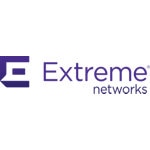White Paper
Building the Optimal Network
Understanding traffic flow is essential to architecture in the data center and out in the enterprise.
Building an optimal network is about more than choosing high-quality hardware. It requires the right components deployed in the right way. When building out a data center network, organizations too often utilize components and design principles that are better suited for an enterprise network, and vice versa.
By understanding the differences between data center and enterprise networking, ranging from traffic patterns and architecture to operational concerns and security challenges, IT professionals can position themselves to create networks that enable high performance and availability of applications, and promote productivity and efficiency in their organizations’ workforce. Following established best practices is key during the build-out and maintenance of a data center or enterprise network to optimize performance.
A trusted networking partner, such as CDW, can help guide organizations through data center and enterprise network build-outs and upgrades, filling in knowledge gaps and offering solutions tailored to each organization’s specific needs.
Differences Between Data Center and Enterprise Networking
Many IT administrators are unfamiliar with the differences between data center networking and enterprise networking. In a recent survey, IT decision-makers from large and small organizations from both public and private sectors on the CDW Customer Advisory Board defined data center networking as the practice of integrating various technical resources located in a data center or server room. Respondents were less sure about the definition of enterprise networking, and one common answer was “end-to-end networking productions and solutions,” a somewhat broad definition. Campus networking was commonly understood to refer to connecting multiple buildings that are part of the same organization and are in close physical proximity, which suggests that respondents see crossover between campus and enterprise networking.
Respondents largely saw both data center and enterprise networking as relying on the same product set: cabling, network infrastructure (such as routers and switches), firewalls and wireless technologies.
While it is true that there is significant overlap in the types of products necessary to build out both data center and enterprise networks, there are also important differences between the two network types. Some of these differences manifest in the specific components that are best suited to each type of network, but traffic patterns, architecture, operations and security are all important differentiators as well.
Robert Herriage, team lead for enterprise networking at CDW, says many organizations still take a one-size-fits-all approach to networking, relying on the same equipment and designs for both data center and enterprise networks. This approach has become less efficient over time, he says, as the rise of virtual machines has driven huge increases in “east-west” traffic between servers in the data center (as opposed to the largely “north-south” client-server traffic that is most common in enterprise networking).
“The biggest difference between the network types is that traffic needs to be optimized differently,” Herriage says. “In enterprise networking, we’re trying to get to the Internet or to the data center. Whereas in the data center, we’re communicating between different servers. The equipment and the features that are prevalent in each type of network are all built around optimizing those different types of traffic patterns.”
The differences between data center and enterprise networking include:
Key components: While routers and switches are integral to both data center and enterprise networking, not all hardware is created equal. Some organizations simply deploy switches based on cost or familiarity, but optimized networks will include switches that are designed specifically for one network type or the other. Cisco Systems’ Nexus family of switches, for example, is designed primarily for use in the data center, while the vendor’s Catalyst switches are built for enterprise networking. Similarly, Brocade’s ICX family of switches is best suited for data center networking, while the VDX family is more appropriate for enterprise networking.
“A data center–class switch has much higher bandwidth and lower latency than a typical enterprise switch,” explains Rick Frothingham, a systems engineer at Cisco.
Traffic patterns: Traffic patterns are the very reason that high bandwidth and low latency are so much more important in data center networking than in enterprise networking. “When you’re running an application clustered over multiple servers, those servers are going to be talking to each other a lot,” Frothingham says. “When you have a data center that runs a web application — a storefront, for example — there are going to be multiple servers responsible for the running of that site, and they’re all going to be communicating with each other.”
Architecture: “Data center networking is all about more density, more bandwidth,” says Senthil Sankarappan, director of product management for Brocade. This stands in contrast to the more spread-out architecture of enterprise networks. “There, you need to provide a lot more connections, rather than high bandwidth.”
78%
The percentage of respondents who say that organizations tend to underestimate the cost of major network upgrades
SOURCE: CDW, “Surveying Your Network 2016,” January 2016

SDN's Potential for Resource Optimization
Software-defined networking (SDN) is a networking approach that separates and abstracts some control-plane functions from network devices and instead places them in a centralized controller. This approach allows IT administrators to bend networks to their application needs without changing configurations across multiple devices.
Because SDN utilizes dynamic software optimization, it allows organizations to reuse existing IT resources (as opposed to static network designs that often lead to the over-provisioning of resources). This also allows for increased scalability and efficiency.
Other benefits of SDN include automation for easier integration with computing resources, as well as improved network visibility. This approach can provide advantages to both data center and enterprise networks.
To accommodate this increasing need for bandwidth, data center architecture has moved away from a hierarchical model and toward a “leaf-spine” model in which “spine” switches make up the core of the architecture and “leaf” switches form the access layer that delivers networking connection points for servers. This model allows administrators to scale out the network horizontally, Sankarappan explains. “When the traffic grows, you just add more leaf switches.”
Operational concerns: While enterprise network administrators are largely concerned with ensuring that users are able to seamlessly access the Internet and corporate resources, Frothingham says, those responsible for data center networks are more concerned with how quickly they are able to provision new resources. Because of this difference in focus, managers of data center networks are better able to take advantage of the operational benefits of programmable switches, which include automated provisioning and configuration. These capabilities fit in with larger orchestration solutions that provide centralized management of data center resources, helping IT managers to monitor and manage a variety of tools and components from a single location.
“You could get to a point where every enterprise switch is programmable, but what does that get you? Nothing,” Frothingham says. “It doesn’t impact the end user experience at all. Whereas it makes a huge difference in the data center, in terms of managing resources efficiently.”
Another important difference between data center and enterprise network operations is the additional emphasis on power and cooling in the data center.
Security challenges: Because end users access corporate resources via the enterprise network, access management solutions are key to enterprise networking. Many enterprise networks rely heavily on the 802.1X standard, which restricts unauthorized clients from connecting to a local area network through publicly accessible ports.
By contrast, security concerns within data center networks largely revolve around identifying malicious traffic.
Building Networks with the Data Center or Enterprise in Mind
The distinctions between data center and enterprise networks should influence network architects as they work to build out and optimize their network infrastructures.
“One easy way to think about it is, who is my client?” Frothingham suggests. “If I’m building an enterprise network, my client is the end user. If I’m building a data center network, my client is the application, and the question is, how do I make it work better? It all comes back to whether I am making the right choices for better applications, or for a better user experience.”
Experts recommend these best practices:
Selecting and deploying key components: For starters, Herriage says, network architects should seek out equipment that has been specifically designed with either data center networking or enterprise networking in mind, rather than simply choosing the most affordable or familiar products. “Honestly, in 85 to 90 percent of the situations, it’s as simple as that,” he says. Additionally, Herriage continues, network architects should look at the specific feature sets of the equipment they are considering. While speed may be paramount for data center network switching, enterprise network architects may instead seek out features such as quality of service and wireless support.
Network architecture: The move toward a leaf-spine architecture in the data center may require some organizations to lean on outside consultants and engineers for help, Herriage says. “If they haven’t bought data center gear in the past three years, it’s not something they’ve implemented.” By contrast, the basics of enterprise network design are already familiar to most enterprise network administrators. By their nature, enterprise networks are more spread out than data center networks, and have drastically lower traffic levels to accommodate. Therefore, enterprise networks are often seen as simpler to design and build out than data center networks.
Managing traffic: “A lot of people treat monitoring as an afterthought, but monitoring and management should be at the forefront,” explains Herriage. “It ends up biting people when they go to solve a problem or troubleshoot. They don’t know they need it until they need it, and at that point it’s too late.” In the data center, monitoring tools help network administrators keep abreast of metrics such as link usage, CPU usage and memory usage, and can help organizations make decisions about when additional capacity will be needed. In the enterprise network, monitoring tools can help administrators see how many devices are connecting to the network and what resources they are accessing.
Security: “There are a lot of security concerns on the enterprise network,” says Frothingham. “You’re typically connecting devices that aren’t owned or managed by the enterprise itself. In the data center, security is obviously still important, but a lot of the concern in data center networking is between one server and other servers.”
On the enterprise side, Herriage says, it is vital for organizations to manage login credentials and restrict access to sensitive data. On the data center side, security concerns largely revolve around malicious traffic. Therefore, organizations must invest in tools such as firewalls and intrusion detection systems that allow administrators to identify and stop threats.

Wireless, WAN Optimization and Beyond
Many IT administrators have more experience building out and managing enterprise networks than data center networks. But emerging enterprise networking technologies are also keeping tech managers on their toes, as organizations look to improve their wireless networks and implement next-generation solutions such as Internet of Things technologies.
Wi-Fi has become practically mandatory, with users expecting to be able to employ their mobile devices to conduct business. Many enterprises have begun to deploy access points that are compatible with 802.11ac, the latest wireless connectivity standard. According to CDW’s “The State of Networking in 2016,” more than half of organizations that are making network upgrades plan to increase wireless spending over the next year.
Thirty-eight percent of organizations making network changes will increase investments in WAN and application optimization, including tools such as WAN optimization controllers designed to improve connection performance within wide area networks without increasing the size of the Internet pipe, according to the CDW study. Meanwhile, 15 percent of organizations making network upgrades will at least research technologies related to the Internet of Things.
CDW: A Network Partner that Gets IT
Even as organizations begin to invest in next-generation technology platforms such as cloud and the Internet of Things, backbone networking hardware remains a top priority. According to CDW’s white paper “The State of Networking in 2016,” routing and switching easily lead the list of network technologies that organizations plan to upgrade over the next 12 months. Among organizations that are making any networking changes in the next year, 77 percent say they will increase their investment in routers and switches.
As enterprises invest in this area, it is vital that they choose the right tools, and deploy these tools in an architecture that is optimized for their own specific traffic flows. CDW can help.
Featured Partners
Extreme Networks® delivers open and standards-based, high-performance, software-defined network architecture and analytics for enterprise, cloud and Big Data/HPC data centers. With an established open technology partner ecosystem, Extreme Networks solves today’s data center challenges with out-of-the-box, proven and integrated solutions that are simple, fast and smart.
space
From Ethernet fabric technology, to an open controller that eliminates vendor lock-in, to a switch stack that you can distribute throughout your campus, Brocade® innovations give you choices. Whether that means functionality, vendors, or even locations beyond the wiring closet, every option is secure, economical and easily manageable.
Cisco® Network Management solutions embody a comprehensive approach to monitoring, diagnosing, troubleshooting and optimizing network system operations. These solutions integrate modular component products and professional services. In doing so, they help meet the demands of increasingly complex and evolving environments.
HPE’s comprehensive and powerful range of next-generation switches can help to deliver the outstanding network performance demanded by today’s IT-dependent organizations. HPE switches provide reliability, proven performance and comprehensive features that help to reduce complexity and optimize network performance.
space
space
space
The CDW Approach
ASSESS
We’ll perform assessments and health checks on your network, lead strategy briefings and design customized solution roadmaps.
DESIGN
We’ll work with you on strategy development and the architectural design of your networking systems. Then we’ll provide proof of concepts and deployment planning.
DEPLOY
We ensure a smooth implementation through pilot and production by offering aggregation services, pre-ship configuring and admin and end-user training.
MANAGE
We offer hosted environments, hosted managed services and remote managed services. We can also assist with cloud migration or provide managed services for a public cloud.




